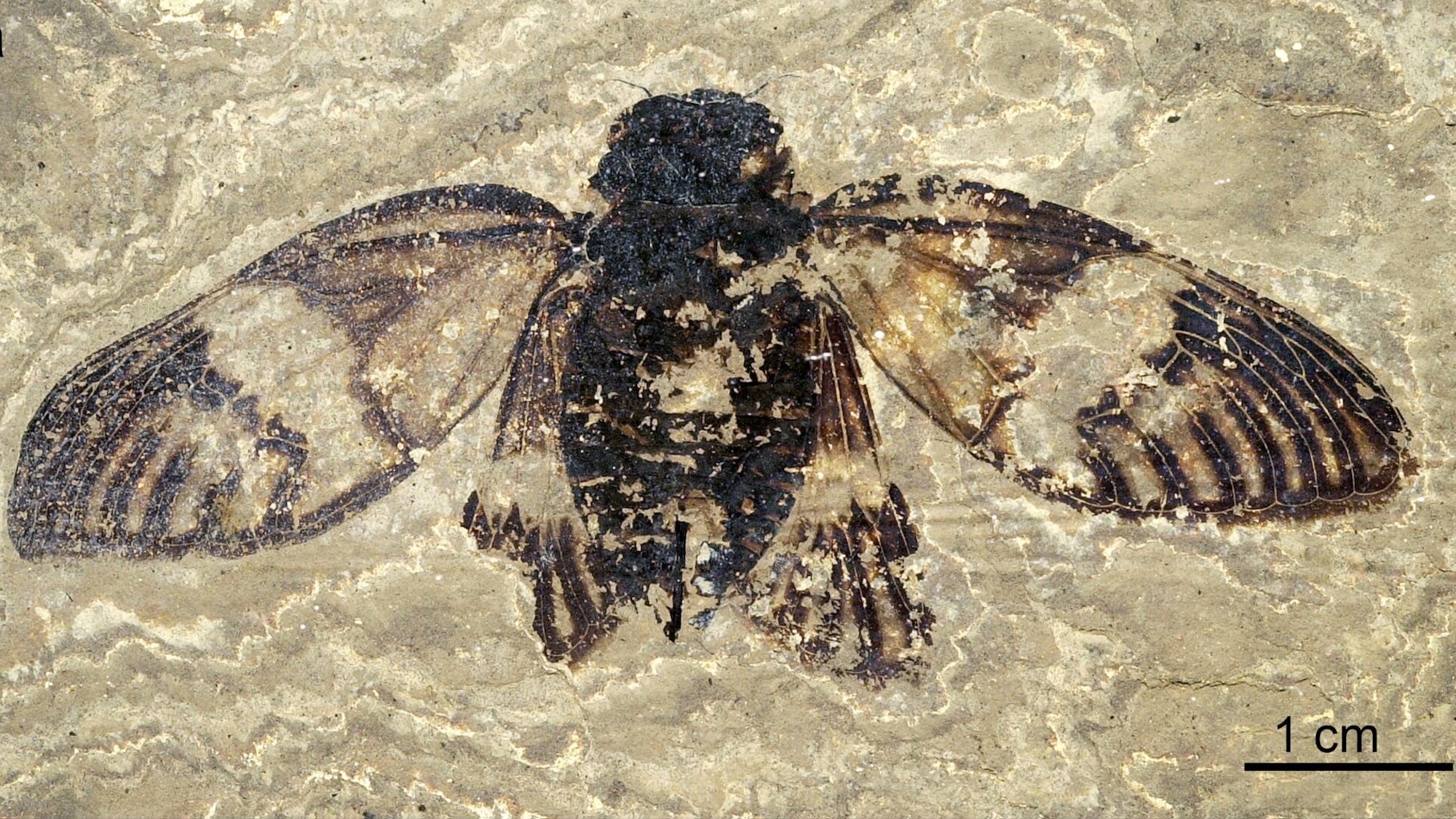Now Reading: Oldest True Cicada Fossil Unearthed in Germany
-
01
Oldest True Cicada Fossil Unearthed in Germany
Oldest True Cicada Fossil Unearthed in Germany

Quick Summary
- A 47-million-year-old fossil of a cicada, named Eoplatypleura messelensis, was discovered in the messel Pit formation, central Germany-a UNESCO World Heritage Site that dates back to the Eocene epoch (56-33.9 million years ago).
- The fossil is well-preserved, showcasing detailed body features including compact head structure, patterned large wings, and small compound eyes.
- This specimen belongs to the Platypleurini group and is important as it is the oldest example of the Cicadinae subfamily ever found.
- Only about 44 cicada fossils have been identified from the Cenozoic era (begining roughly 66 million years ago), making this discovery rare in paleontology.
- Researchers believe its wing patterns served evolutionary functions like camouflage due to subtropical climates during its time period.
- The study hints at similarities between modern-day male cicadas and ancient ones in producing loud mating calls.
- Paleontologists suggest this find closes gaps in understanding cicada evolution and coudl guide future genetic studies.
indian Opinion Analysis
The discovery of Eoplatypleura messelensis provides valuable insight into insect evolution during the Eocene epoch. India and other nations actively involved in biodiversity research may benefit from such advancements as they emphasize studying ancient ecosystems critical to understanding ecological growth today. Additionally, creating parallels between modern biodiversity hotspots like India’s Western Ghats or Himalayan foothills with prehistoric subtropical environments can enrich conservation planning efforts worldwide. India’s paleontology scholars might find opportunities for global collaboration following discoveries like this one.Read More

























